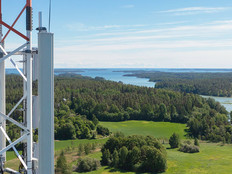Ready, Set, Go
All IT managers want the performance improvements that the 600 megabits-per-second of throughput and increased coverage of the new 802.11n wireless standard promise. But with the IEEE standard not yet official — and pre-standard products on the market — it’s important to do your homework and consult with your network manufacturer before moving forward.
Here are pointers to help prepare for an upgrade to 802.11n:
No. 1: Look for modular access points.
Although all indications are that final changes to the draft 2.0 standard will be upgradeable with software, there’s no guarantee that this will be the case. Before buying, ask the manufacturer what kind of replacement policy they have and how easy it will be to swap out gear. You may want to look for modular products that let you easily exchange networking cards.
Caveat: Because the current generation of 802.11n products don’t support the full theoretical potential of 600Mbps, you may find yourself upgrading hardware in a few years anyway.
 No. 2: Find site survey tools that can handle 802.11n.
No. 2: Find site survey tools that can handle 802.11n.
The coming standard offers much greater coverage than the existing 802.11g and 802.11a standards. Because it achieves this through new technologies, such as multiple input/multiple output and channel bonding, it’s important that your site survey tool understand 802.11n to get an accurate survey.
Many wireless manufacturers are upgrading their survey tools for 802.11n, but be sure to ask. If you are using an older tool, one workaround is to do a survey for 802.11a, which will give you the AP density you need for 802.11n. This makes good sense if you need to support legacy protocols. But if you’re doing a greenfield installation and will support only 802.11n, pop for a new site survey tool.
 No. 3: Check the wattage.
No. 3: Check the wattage.
Most Power over Ethernet switches support the 802.3af standard and can supply a theoretical maximum of 15.4 watts of power to PoE-capable devices. After loss from cabling and power supplies, however, actual power output may be closer to 12 or 13 watts.
The new draft 802.3at standard promises to supply up to 24 watts, but it’s not ready. Power requirements of 802.11n access points are all over the map — some manufacturers require more than 15.4 watts; others work within the current standard. For those that claim to work with 802.3af power, find out exactly how much power the AP requires and how it behaves if it doesn’t get it. Your best bet is to test switches and APs in a real-world environment before going live.
 No. 4: Consider aesthetics.
No. 4: Consider aesthetics.
Wireless gear used to be fairly simple, with a single antenna or two. But some new products have as many as six antennas. This may sound trivial, but you don’t want ugly gear on the walls or ceilings of coveted historic buildings. You may also need to hide APs in drop ceilings, which could interfere with the wireless signal, putting a damper on performance. In some cases, you may need to roll out a few extra APs to ensure adequate coverage.
No. 5: Study network design.
There has been debate for the past few years over whether an 802.11 wireless network should be based on standalone “thick” APs or “thin” APs powered by a central controller. The earliest wireless networks were primarily thick; most of the intelligence resided in each access point. As wireless networks expanded, the industry moved toward a thin AP model; the access points are essentially dumb radios, and all the intelligence resides in centralized controllers.
There’s now some concern that with the increased throughput of 802.11n, centralized controllers (and uplinks to them) won’t be able to handle the traffic. Whether this is an issue in your agency will depend on your deployment size, the location of your controllers and usage patterns on your network.
 No. 6: Focus on spectrum and channel planning.
No. 6: Focus on spectrum and channel planning.
The consensus is that the 5-gigahertz spectrum is best for enterprise wireless because it is a cleaner space than 2.4GHz. Because 802.11n allows you to run in either space, you’ll need to decide which frequencies to use and whether you want to support the legacy 802.11a/b/g protocols. Many of the 802.11n APs on the market feature dual radios, a good choice at least for the next couple of years because many notebook systems will work only with those legacy standards.
If you haven’t deployed 802.11a widely, consider using one radio to run 802.11n in 5GHz and the other to run 802.11b/g in 2.4GHz. You could add 802.11n to the mix in 2.4GHz, but keep in mind that it limits your ability to enable channel bonding, a performance-enhancing feature in 802.11n that lets you merge two 20-megahertz channels into one 40MHz channel. Because 2.4GHz allows for only three nonoverlapping channels, you’ll be able to run only one 40MHz bonded channel, which would limit your deployment option.







